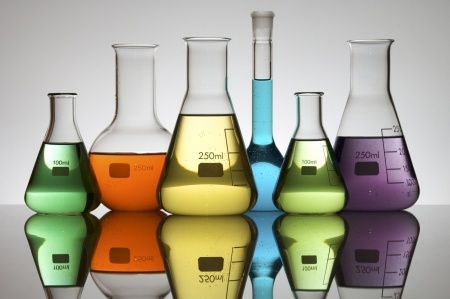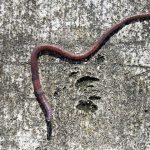
Water is a fundamental component in food, both in terms of maintaining food quality, its preservation and minimizing microbial spoilage. Water activity (aw) is a measure of how water behaves. It is extremely important to know when considering the preservation of biomaterials and food, especially at ambient temperature (Labuza, 1977).
The term, water activity, which is very frequently quoted in food science comes from basic thermodynamics in chemistry. It is a concept based on chemical potential which is an intensive property and thus is independent of the quantity of material. Other intensive properties are temperature, density and pressure.
Water activity is simply the ratio of vapour pressure of water in a system such as a food sample, to the vapour pressure of pure water at the same temperature.
Another expression for water activity is the equilibrium relative humidity (ERH) expressed in per cent terms of the air surrounding the food at the same temperature. The higher the value the more susceptible a foodstuff is to spoilage or microbial fermentation. It’s a measure most usefully needed by microbiologists to help them assess the risk posed by growth of pathogens for food poisoning.
The basic equation for predicting aw is based on Raoult’s Law which is:-
aw = ƴ (N1/ [N1 + N2) = P/P0
Here, ƴ is the activity coefficient; N1 is the number of moles of water in the system whilst N2 is the number of moles of theoretical solute in the system. This is equated to P which is the vapour pressure of water above the system and Po is the vapour pressure of pure water, all at the same temperature.
Measurement Of Water Activity
At the moment, there are a few suppliers of equipment for the laboratory where water activity can be measured. It is worth checking out Rotronic Measurement Solutions, Omni Instruments, Aqualab and Novatron Scientific for pieces of laboratory equipment.
The conventional, tried and trusted methods check water activity by placing a food sample into a closed chamber and equilibrating the liquid-phase water in this sample with the vapour-phase water in the headspace. The relative humidity of the headspace must be measured.
A variety of methods exist for measurement of water activity based on this approach but there are really two types of instrument worth considering.
They include:-
– the method of vapour pressure measurement
– the isopiestic method or equilibrium sorption rate method
– the hygrometric instrument method
Other techniques have used the change in the freezing point of water to estimate water activity. Generally, an accuracy up to 0.02 water activity units is needed.
Each method has its advantages and disadvantages and the methods vary in accuracy, repeatability, speed, calibration stability, convenience of use and linearity over the range being measured.
Troller and Christian (1978) provide extensive coverage with large portions of this work freely available on the Internet. There is also excellent coverage provided by the research institutes. One to look at is CSIRO’s coverage (CSIRO, 2011) where the concept was initially explored.
Capacitance Sensors
These sensors are also called capacitance or electric hygrometers. They are two charged plates separated by a hygroscopic polymer membrane. As the membrane adsorbs water, its ability to hold a charge increases. The resulting capacitance change is approximately proportional to the water activity as determined by a sensor calibrated against known saturated salt standards. The sensor gives a signal relative to the ERH and thus the water activity (as ERH/100). Commercially available instruments measure over the entire water activity range with an accuracy of ±0.015 aw.
Chilled-Mirror Dewpoint System
As air is passed over a chilled surface whose temperature is gradually reduced, the temperature at which the water vapor begins to condense on the surface is the dewpoint temperature, which is directly related to the vapor pressure of the air. The system, consists of a sensor block containing a dewpoint sensor, an infrared thermometer, and a fan. A sample is placed in a sample cup which is sealed against the sensor block. The dewpoint sensor measures the dewpoint temperature of the air, and the infrared thermometer measures the sample temperature. The relative humidity of the headspace is calculated as the ratio of dewpoint temperature saturation vapor pressure to saturation vapor pressure at the sample temperature. When the water activity of the sample and the relative humidity of the air are in equilibrium, measurement of the headspace humidity gives the water activity of the sample. Chilled-mirror instruments make accurate (±0.003 aw) measurements in less than 5 min, without the need for calibration.
The Meaning Of Water Activity In Food Systems
A great many reviews discuss the meaning of water activity and its impact on food quality and most food science texts examine its role. Labuza at the University of Minnesota, USA has written extensively on the subject and his seminal studies provide much of our understanding of the relationship (Labuza, 1980; Rahman and Labuza, 2007; Barbosa-Canovas et al., 2007) and it’s worth just checking out the various lecture notes in his profile.
One of Labuza’s contributions to the study of water activity was how the rates of various types of deterioration and nutrient loss in food could be described as a function of aw (Labuza, 1977).
Pathogens and spoilage micro-organisms will not grow or produce their toxins below certain water activity values. In truth, the growth rate of microorganisms declines with decreasing aw. It reaches a negligible value of around 0.85 for bacteria and 0.62 for yeasts and moulds (Rahman, 2009).
It is generally thought that a value of 0.85 or below is sufficient for food safety. We know of some micro-organisms that are robust and hardy enough to grow below this value and indeed a few can grow as low as a water activity of 0.6. Generally, Most pathogens are restricted to water activities above 0.95.
Yeast, especially baker’s dry yeast (Saccharomyces cerevisiae) loses its viability during long-term storage. The rate of loss is attributed to a pervasive level of water activity. It is important to stabilize living materials to preserve their activity and so we look at some of those methods.
Stabilising Foods
Ingredients and processing methods are commonly sought to reduce the water activity of foods so as to offer a protective hurdle or barrier to growth or prevent chemical deterioration. Extending shelf-life is one such goal which is made possible my adding particular materials called humectants.
Humectants are ingredients that are relatively low molecular weight substances that are added to foods to reduce their water activity whilst maintaining a soft texture that might otherwise be affected, even damaged by removing water through drying for example. Common humectants are glycerin, salt (sodium chloride), sucrose, propylene glycol, sorbitol and corn syrup. Humectants are also used in the cosmetics industry and it is quite common to find ingredients such as trehalose which is a rare sugar in such products.
Humectants work because they are hygroscopic compounds which physically bind water to themselves in food (Labuza et al., 1974; Karel, 1973). Raoult’s Law cannot often be applied because of considerable deviation in ideality of humectants beyond a minimum concentration.
References
Barbosa- Cánovas, G.V., Fontana, A.J., Schmidt, S.J., Labuza, T.P. (2007) Water Actvity in Foods: Fundamentals and Applications. Blackwell Publ. IFT Press
CSIRO (2011) http://www.csiro.au/en/Outcomes/Food-and-Agriculture/water-activity-in-food.aspx (Link no longer available – 21st August 2017).
Karel, M. (1973) Stability of low and intermediate moisture foods. In “Proc. 6th Int’l Course on Freeze Drying and Advanced Food Technology,” Buergenstock-Lucerne. Switzerland.
(1977). The properties of water in relationship to water binding in foods: A review. Journal of Food Processing and Preservation, 1(2), pp. 167–190 (Article).
Labuza, T.P. (1980) The effect of water activity on reaction kinetics of food deterioration Food Technol., April 34(4) pp. 36-41,59
_______________ also FScN 4312 Food Analysis http://www.ardilla.umn.edu/Ted_Labuza/FScN%204312/4312-default.html (link no longer available 21st August 2017).
Labuza, T.P., Sloan, K.E., Acott, K.A. and Warmbier, K.C. (1974). Intermediate moisture foods: Chemical and nutrient stability. In “Proc. 4th I&L Congress of Food Tech..” Madrid. Spain.
Rahman, M. and Labuza, T.P. (2007) Water activity and food preservation. Chapter 20 In: Handbook of Food Preservation, 2nd Edition. M. Rahman (ed.). Taylor and Francis, Boca Raton, FL. USA.
(2009). Food stability beyond water ativity and glass transition: Macro‐micro region concept in the state diagram. International Journal of Food Properties, 12, pp. 726–740 (Article).
Troller, J.A., Christian, J.H.B. (1978) Water Activity and Food. Publ. Academic Press, Inc. (London) ISBN 0-12-700650-8 (UK & USA printed versions)

Leave a Reply